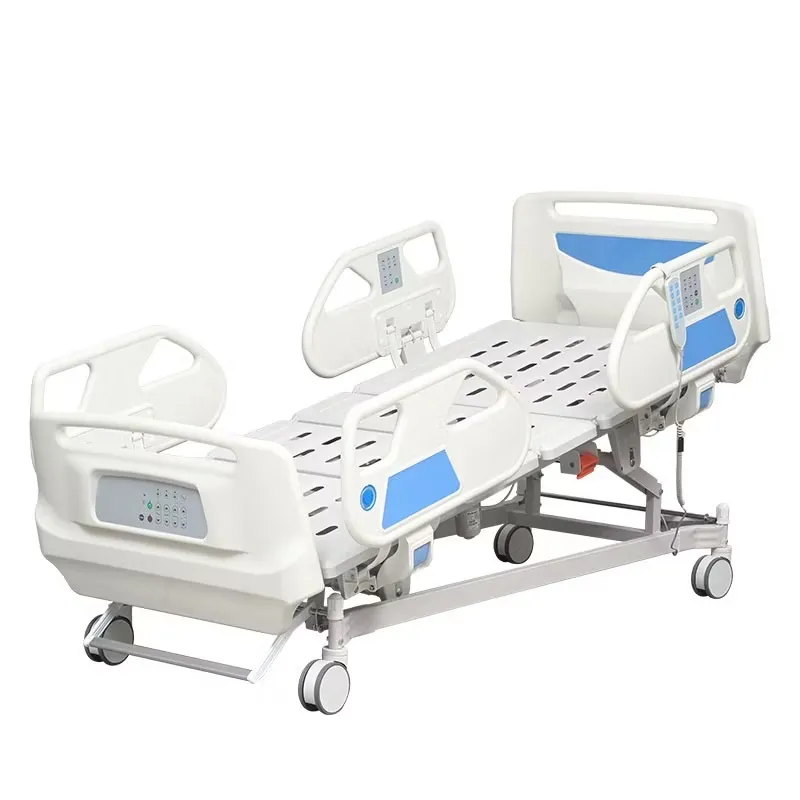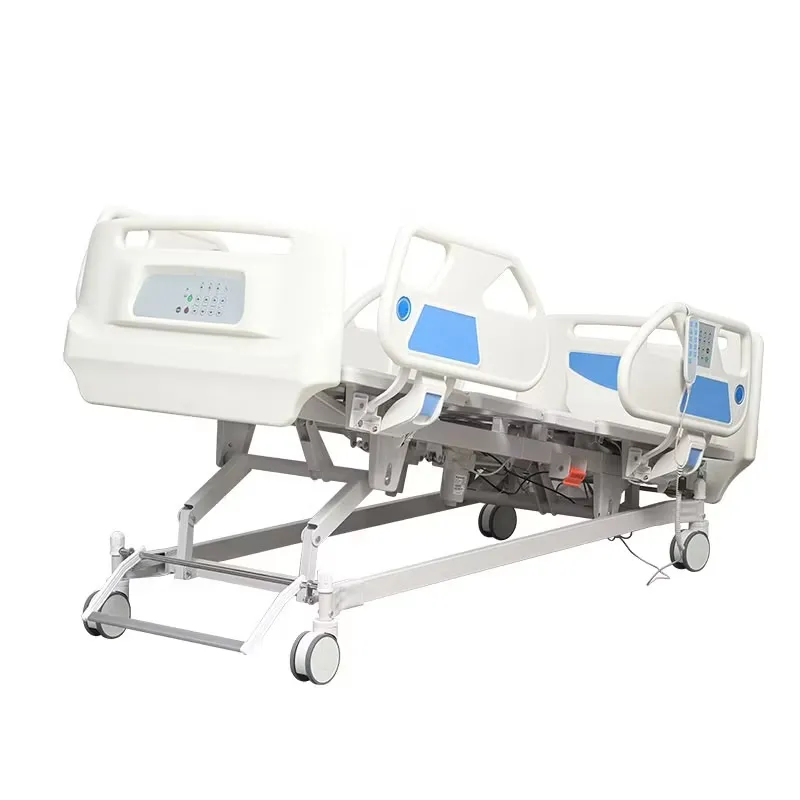ICU Hospital Bed - Electric 5-Function, Adjustable, Durable
Inside the ICU: what a modern electric bed really needs
When people say ICU hardware is “just a bed,” I smile. The difference between a commodity frame and a true Icu Hospital Bed is night and day—clinicians feel it at 3 a.m., and patients feel it when pain management and micro‑repositioning actually work.

Quick snapshot
Model: Can Be Customized Adjustable Hospital ICU Special Electric Hospital Bed. Origin: Zhouhu Village, Jizhou Zone, Hengshui City, Hebei Province, China. Standard configurations include a control box (1 pc), linear motors (4 pcs), and a handheld control (1 pc). To be honest, the essentials are here, with room to spec it up.
Why the ICU is trending more “electric”
Two things drive the shift: nurse staffing pressure and higher acuity. Electric profiling, silent actuation, and integrated safety logic reduce strain and improve turn frequency. Many customers say the big win is smoother motion—less startle, fewer alarms.

Key specifications (field-proven ranges)
| Overall size | ≈ 2200 × 1050 mm (real‑world use may vary) |
| Height range | ≈ 430–760 mm |
| Backrest / Knee | 0–70° / 0–40° |
| Trendelenburg / Reverse | 12° / 12° |
| Safe working load | ≈ 230 kg |
| Actuation | 4 linear motors + centralized control box |
| Casters / Braking | 125 mm, central lock |
| Rails / Boards | ABS side rails; PP head/foot boards |
| Power / IP | AC 110–240 V; motors rated ≈ IPX4 |
| Noise | < 50 dB @ 1 m |
| Backup | Optional battery; manual CPR release |
| Service life | 8–10 years with preventive maintenance |
Note: exact specs can be customized; field tolerances apply.

Process, materials, and testing
Frame: welded Q235 steel, shot‑blasted and powder‑coated (70–90 μm). Deck: split platform with X‑ray cassette option. Rails: ABS with one‑hand latch. Methods: robot welding, e‑coat underlayer, torque‑set fasteners. Tests: 20,000 duty cycles back/knee; 72 h salt spray; drop/impact on rails; caster endurance 30 km; leakage current per IEC 60601; load test @ 1.5× SWL. It seems rigorous—and frankly, it needs to be in ICU.

Where it’s used
Critical care, step‑down, ER bays, LTACH units, and—surprisingly—rental fleets for surge capacity. A Icu Hospital Bed with low min‑height helps fall prevention; Trendelenburg assists shock management; quiet motors reduce delirium triggers.
Vendor snapshot: customization vs brand premiums
| Vendor | Customization | Lead time | Cert support | Price band |
|---|---|---|---|---|
| Zhaofa Med (OEM) | High: dimensions, rails, motors, controls | 30–45 days (typical) | ISO 13485; IEC 60601-2-52 test reports | $$ (value) |
| Global Brand A | Medium: options catalog | 60–90 days | CE/FDA portfolio | $$$$ |
| Marketplace OEM B | Low–Medium | 45–70 days | Varies; verify diligently | $–$$$ |

Customization and options
Common requests: scale integration, bed‑exit alarm, fifth wheel, battery backup, nurse control panel, retractable deck, O2 tank holder, IV poles, CPR lever both sides, and antimicrobial coatings. For a Icu Hospital Bed in tight wards, a narrower footprint and corner bumpers help a lot.
Real‑world outcomes
Case 1 (County Hospital): 24 beds replaced; pressure‑injury incidence dropped from 4.1% to 2.7% in 6 months with auto‑profiling reminders. Nurses reported “quieter nights.”
Case 2 (Rental Fleet): Mixed ICU/step‑down deployment; zero actuator failures over 10,000 cycles logged, and caster wear stayed within spec. One manager joked the handhelds “finally survive weekends.”

Compliance checklist
- IEC 60601-2-52: medical bed safety and essential performance
- IEC 60601-1 and -1-2: electrical safety and EMC
- ISO 13485 QMS; biocompatible polymers per ISO 10993 contact classes
- Documentation: risk management (ISO 14971), IFU in local language
Procurement tip: request load, EMC, and ingress test reports plus a maintenance plan. It’s mundane paperwork, but it separates a solid Icu Hospital Bed from a headache.
Closing thought
Actually, what buyers want is simple: safe, quiet, and configurable. This platform hits those notes without the sticker shock—and yes, you can still geek out on motors and rails if you like.
Authoritative references
- IEC 60601-2-52: Medical electrical equipment—Part 2-52: Particular requirements for basic safety and essential performance of medical beds. https://webstore.iec.ch
- IEC 60601-1 and 60601-1-2 (EMC). https://webstore.iec.ch
- ISO 13485: Medical devices—Quality management systems. https://www.iso.org/standard/59752.html
- ISO 14971: Medical devices—Application of risk management. https://www.iso.org/standard/72704.html
- WHO: Practical guidelines for infection prevention in health care. https://www.who.int




































